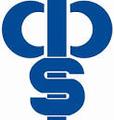WELLBEING AND INCLUSION

We are fortunate to welcome Amy Frueh, who is an Occupational Therapist, to our Chilwell Wellbeing Team one day a week. Amy is working with classroom teachers to support students across the school. Thank you Amy for the following tips about Fine Motor Skills.
Fine motor skills for school aged children
- Fine motor skills are the skills required to carry out functional activities with our hands, using the small muscles of the hand. These skills are used to eat, tie laces, use scissors, dress, write, draw and play.
- Fine motor skill areas include in hand manipulation, finger isolation & dexterity, strength, midline crossing, bilateral coordination (use of both hands), force of movement and pincer grasp.
- It is important to develop these skills in order to have the stamina and confidence to participate in daily routines and activities required for school, home and play.
Ways to incorporate some fine motor skills into your child’s day:
- Using apparatus like tongs, tea strainers, chopsticks, laundry pegs or clips to interact with other toys like in pretend play, when picking up pieces of Lego or during arts/crafts.
- Placing snacks in zip lock bags, packets or containers and placing construction tasks or arts/crafts in screw lids/containers and pencil cases. Practice and model opening them if challenging for your child.
- Using mini travel games for game play such as connect 4, battleships, puzzles and various card games.
- Encourage participation in dressing routine and having a go at zippers, buttons, Velcro, laces, socks (choosing one thing at a time if your child can become overwhelmed or is developing skills in this area).
If your child is not really into fine motor activities at this time, some ways to start supporting interest or development of fine motor skills would be:
- Using smaller equipment in movement activities like tennis balls over basketballs, bats/racquets and frisbees.
- Using chalk on the pavement, drawing with a whiteboard, magnetic drawboard, paint sticks, crayon rocks or other materials to colour in/draw. These can be used to draw parts of the play scene or incorporated into the play eg: to tally the game scores.
- Having a go at playing with and exploring different textures like bristle blocks, playdough, sand, water, buttons, pipe cleaners, paint, pom poms, beads, stickers, plush toys to discovering preferences.
- Making playdough or having a go at cooking (mixing with a spoon, sorting small berries or diced vegetables, cutting with a Kiddikutter knife).
- Incorporating finer play items into game play or having them visually cued (in sight).
Some strategies to help:
- Modelling making mistakes and problem solving to support them through developing new skills and building confidence.
- Backwards chaining – start by doing most of the task and leaving the last step (eg: school shirt, leaving the last button) for your child to complete, this may help build their confidence and feeling of success. Gradually start to do less and less until they are ready and able to button it themselves! This can work with a variety of tasks like cutting up bits of food, building a tower of blocks or introducing new games.
Amy Frueh – Occupational Therapist

